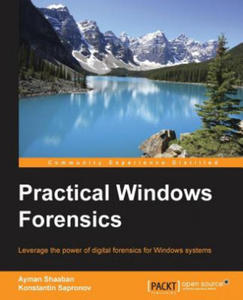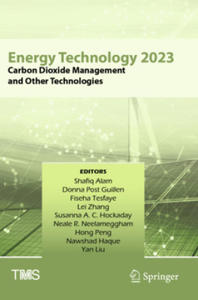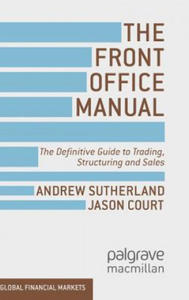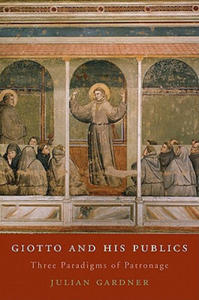libristo analysis of the life cycle of a built environment 14262939
- znaleziono 8 produktów w 4 sklepach
Life Cycle Assessment in the Built Environment Taylor & Francis Ltd
Książki / Literatura obcojęzyczna
Life cycle assessment enables the identification of a broad range of potential environmental impacts occurring across the entire life of a product, from its design through to its eventual disposal or reuse. The need for life cycle assessment to inform e
Sklep: Libristo.pl
Distributed network protocols for anonymous stations in cooperative and noncooperative settings Politechnika Gdańska
INFORMATYKA
This work studies the effects of station anonymity and/or noncooperative (selfish) station behavior upon the design and performance of selected distributed network protocols. A set of stations interconnected by a computer network are assumed to be engaged in a collective activity for which some inter-station consistency is required. The considered protocols relate to group communication (where message delivery in agreed order is required), random multiple access over a single channel (where collision avoidance is required), and packet forwarding (where maintenance of end-to-end paths is required). Design of distributed protocols for anonymous stations permits to dispense with costly authentication mechanisms, and provides a "security lower bound" for systems in which station identities are relied upon. Modeling of noncooperative settings (where stations are allowed to behave selfishly) is justified in view of the increased autonomy and user configurability of today's network components; at the same time, as a departure from the traditional engineering paradigm, it opens up interesting areas of networking research. In Chapter 2, two agreed order multicast protocols are proposed for anonymous stations in a cooperative setting. Both are LAN-oriented i.e., designed to yield high group throughput by exploiting the natural synchronism of single-broadcast transmission media. A faulty communication environment is assumed with occasional reception misses - failures by one or more stations to receive a message. The Distributed Precedence Graph (DPG) protocol is network-independent in that multicast and reception primitives clearly define a protocol-to-network interface, and missed message recovery is separated from message ordering. In contrast, the Jamming Protocol (JP) is network-dependent and exploits in a novel way the "ideal synchronism" of LAN broadcast to couple missed message recovery and message ordering. Both proposed protocols are insensitive to membership control mechanisms and do without the knowledge of station identities. Even so, they compare favorably with existing agreed order multicast protocols like LANSIS or TOTEM, as demonstrated by the analysis of logicaltime properties and simulation of stochastic performance. Chapters 3 through 5 are devoted to game-theoretic analysis of random access MAC-layer protocols in a noncooperative setting. Chapter 3 deals with CSMA/CA, the multiple access mechanism of the IEEE 802.11 MAC protocol. It is argued that in an ad hoc wireless LAN, CSMA/CA is vulnerable to a selfish backoff attack consisting in systematic selection of short backoff times. Network performance under a backoff attack is evaluated via extension of Bianchi's Markovian approximation, as well as using more accurate models. A sufficient condition of solvability is given and a game-theoretic analysis is carried out with stations' bandwidth shares regarded as payoffs. Launching a backoff attack is established as a strictly dominating action, the payoff structure of the resulting one-shot CSMA/CA game being similar to a multiplayer Prisoners' Dilemma (with a unique and Pareto non-optmal Nash equilibrium). The notion of a Nash capacity is introduced to show that selfish station behavior reduces the achievable bandwidth utilization roughly by half compared with a cooperative setting. Incentive-based discouragement of backoff attacks is proposed in Chapter 4 using the concept of a repeated CSMA/CA game, where a station is allowed to reconfigure its CSMA/CA mechanism based upon past payoffs. Assuming that most stations are interested in enforcing cooperative behavior of the other stations, a satisfactory equilibrium play is shown possible. In particular, a selfish station can be expected to incline to honest play for fear of the other stations inclining to selfish play. This idea is elaborated upon and gives rise to two proposed strategies of playing the repeated CSMA/CA game, called Cooperation via Randomized Inclination to Selfish Play (CRISP) and Selfish Play to Elicit Live-and-Let-live (SPELL). By exploiting another property of the one-shot CSMA/CA game, called coarse profile observability, CRISP and SPELL are shown to asymptotically achieve Pareto optimality and the related Nash equilibrium becomes subgame perfect. It is shown how to extend the proposed strategies if some stations disengage the CSMA/CA backoff scheme. Chapter 4 concludeswith a discussion of QoS-sensitive station behavior, in which case the CSMA/CA game may change from a Prisoners' Dilemma into a form of a queuing game. Selfish behavior of CSMA/CA stations studied in Chapters 3 and 4 only affects specific protocol parameters, leaving the very principle of contention unchanged. In Chapter 5 we look at a slightly more general model of single-channel contention. In the proposed framework, the MAC protocol proceeds in cycles, each of which accommodates the stations' requests to transmit. This subsumes various existing random token-like protocols e.g., CSMA/CA, Random Token, slotted ALOHA, and HIPERLAN/1. A selection configuration determines how the requests are placed, whereas a winner policy decides the winner of a contention. It is argued that while the winner policy must be agreed upon by all the stations, the selection configuration is entirely within a station's discretion. For a wide class of winner policies, called Random Token with Extraneous Collision Detection (RT/ECD), the notions of verifiability and viability are introduced to factor out brute-force selfish behavior, and shown to lead to two interesting winner policies, RT/ECD-0 and RT/ECD--. The resulting games are found to be a multiplayer Prisoners' Dilemma and an anti-coordination game, respectively. Related repeated games are again found to potentially lead to cooperative behavior. In Chapter 6, selfishness considerations are extended to the network layer of a mobile ad hoc network (MANET). Each MANET station generates source packets and also is supposed to forward transit packets for pairs of stations currently out of each other's reception range. It is argued that forwarding transit packets becomes a dual liability: it shortens the station's battery life "in exchange for" sacrificing a portion of the channel bandwidth that could be used for source packets. Under the introduced packet anonymity model (no packet reveals its source station except at destination), undetectable selfish manipulation of the local congestion controls is possible. The issue is addressed in a noncooperative game-theoretic framework: each MANET station selects its own strategy (congestion control settings) at will, so as to maximize some defined payoff (a combination of source packet throughput and a reputation measure). For a class of Drop-and-Throttle (D&T) congestion control mechanisms, a generic model is formulated, whereby a station adjusts its D&T threshold in response to the other stations' adjusted thresholds; this model is subsequently translated into a simple extensive-form game. Types of reachable Nash equilibria are discussed and the notion of robustness of a Nash equilibrium is introduced. Finally, a novel packet forwarding protocol called Fair Forwarding with Forced Transmissions (F3T) is presented, which, if properly configured, leads to a desirable type of Nash equilibrium. Spis treści: CONTENTS LIST OF SYMBOLS AND ABBREVIATIONS 1. INTRODUCTION 1.1. Motivation, objective, and scope 1.2. Outline of the contents 2. MEMBERSHIP INSENSITIVE AGREED ORDER MULTICAST 2.1. Introduction and related work 2.2. Message ordering constraints 2.3. Jamming Protocol 2.3.1. LAN model 2.3.2. JP mechanisms and data structures 2.3.3. Jamming and lag detection 2.3.3.1. Ethernet 2.3.3.2. Token Ring 2.3.4. "Catch-up" mechanism 2.4. Evaluation of JP 2.4.1. Logical-time properties of JP 2.4.2. Stochastic performance of JP 2.5. Distributed Precedence Graph protocol 2.5.1. Network service model 2.5.1.1. Wired or wireless single-channel LAN 2.5.1.2. Tag seąuencer 2.5.1.3. Bounded-deiay WAN with sparse group messages 2.5.2. DPG data structures and PDU types 2.5.3. Maintenance of strong ADO 2.5.4. Missed message recovery and flow control 2.6. Evaluation of DPG 2.6.1. Logical-time properties of DPG 2.6.2. Stochastic performance of DPG 2.7. Conclusion 3. BACKOFF ATTACK AND ONE-SHOT CSMA/CA GAME 3.1. Introduction and related work 3.2. Network operation 3.2.1. CSMA/CA contention under IEEE 802.11 DCF protocol 3.2.2. Network model 3.3. Solvability of EBM 3.3.1. Uniform CSMA/CA configuration profile 3.3.2. Non-uniform CSMA/CA configuration profile 3.4. Station performance 3.5. Backoff attack incentives 3.5.1. Selfish configurations 3.5.2. CSMA/CA game and Nash capacity 3.5.3. Selfish and greedy configurations 3.5.3.1. Incentives in a binary set of actions 3.5.3.2. Incentives in a temary set of actions 3.5.4. Mixed and Monte Carlo models 3.6. Conclusion 4. BACKOFF ATTACK DISCOURAGEMENT and REPEATED CSMA/CA GAME 4.1. Introduction and related work 4.2. Morę properties of one-shot CSMA/CA game 4.3. Repeated CSMA/CA game 4.3.1. Introduction to repeated games 4.3.2. Application to CSMA/CA game 4.4. CRISP strategy 4.4.1. Strategy description 4.4.2. Uncorrelated Pareto optimality and subgame perfection 4.4.3. Performance 4.4.4. Enforceability 4.4.5. Ternary CRISP 4.5. SPELL strategy 4.5.1. Strategy Description 4.5.2. Uncorrelated Pareto optimality and subgame perfection 4.5.3. Ternary SPELL 4.6. QoS game 4.6.1. One-shot QoS game 4.6.2. Dynamie QoS game scenarios 4.6.3. Stochastic QoS game 4.7. Conclusion and comments 5. NONCOOPERATIVE CHANNEL CONTENTION IN AD HOC LANS WITH ANONYMOUS STATIONS 5.1. Introduction 5.2. WLAN model 5.3. Framework for a winner policy 5.3.1. Reąuests to transmit 5.3.2. Verifiability 5.3.3. Performance objectives 5.3.4. Viability 5.4. Binary RT/ECD game 5.4.1. One-shot RT/ECD game 5.4.2. Stage-by-stage repeated RT/ECD game 5.4.2.1. Nash strategy 5.4.2.2. Idea Bag strategy 5.5. Cycle-by-cycle repeated RT/ECD game 5.5.1. Reinforcement learning strategies 5.5.2. Evolutionary stability 5.6. Conclusion 6. FAIR PACKET FORWARDING IN MOBILE AD HOC NETWORKS 6.1. Introduction 6.2. Related work 6.2.1. Reputation systems 6.2.2. Micropayment schemes 6.2.3. Game-theoretic approaches 6.3. Forwarding model and related selfish behavior 6.3.1. Forwarding model 6.3.2. Discussion of the model 6.3.3. Undetectable selfish behavior 6.4. Game-theoretic model 6.4.1. D&Tgame 6.4.2. Reachability of Nash eąuilibria 6.5. F3T protocol 6.5.1. Protocol description 6.5.2. D&T game payoffs under F3T 6.6. F3T protocol configuration and performance 6.7. Conclusion and future research 7. SUMMARY OF MAIN RESULTS BIBLIOGRAPHY Summary in English Summary in Polish
Sklep: Księgarnia Techniczna
Practical Windows Forensics Packt Publishing Limited
Książki / Literatura obcojęzyczna
Leverage the power of digital forensics for Windows systems About This Book * Build your own lab environment to analyze forensic data and practice techniques. * This book offers meticulous coverage with an example-driven approach and helps you build the key skills of performing forensics on Windows-based systems using digital artifacts. * It uses specific open source and Linux-based tools so you can become proficient at analyzing forensic data and upgrade your existing knowledge. Who This Book Is For This book targets forensic analysts and professionals who would like to develop skills in digital forensic analysis for the Windows platform. You will acquire proficiency, knowledge, and core skills to undertake forensic analysis of digital data. Prior experience of information security and forensic analysis would be helpful. You will gain knowledge and an understanding of performing forensic analysis with tools especially built for the Windows platform. What You Will Learn * Perform live analysis on victim or suspect Windows systems locally or remotely * Understand the different natures and acquisition techniques of volatile and non-volatile data. * Create a timeline of all the system actions to restore the history of an incident. * Recover and analyze data from FAT and NTFS file systems. * Make use of various tools to perform registry analysis. * Track a system user's browser and e-mail activities to prove or refute some hypotheses. * Get to know how to dump and analyze computer memory. In Detail Over the last few years, the wave of the cybercrime has risen rapidly. We have witnessed many major attacks on the governmental, military, financial, and media sectors. Tracking all these attacks and crimes requires a deep understanding of operating system operations, how to extract evident data from digital evidence, and the best usage of the digital forensic tools and techniques. Regardless of your level of experience in the field of information security in general, this book will fully introduce you to digital forensics. It will provide you with the knowledge needed to assemble different types of evidence effectively, and walk you through the various stages of the analysis process. We start by discussing the principles of the digital forensics process and move on to show you the approaches that are used to conduct analysis. We will then study various tools to perform live analysis, and go through different techniques to analyze volatile and non-volatile data. Style and approach This is a step-by-step guide that delivers knowledge about different Windows artifacts. Each topic is explained sequentially, including artifact analysis using different tools and techniques. These techniques make use of the evidence extracted from infected machines, and are accompanied by real-life examples.
Sklep: Libristo.pl
PRINCIPLES OF MARKETING PLUS PEARSON GARY ARMSTRONG WYDAWCA
Podręczniki, artykuły szkolne > Podręczniki do szkół podst. i średnich
Principles of Marketing plus Pearson MyLab Marketing with Pearson eText, Global Edition Learn how to create value through customer connections and engagement In a fast-changing, increasingly digital and social marketplace, it
Sklep: ksiazkitanie.pl
Energy Technology 2023 Springer, Berlin
Książki / Literatura obcojęzyczna
Clean and sustainable energy is of paramount importance for industrial activities, economic development, environment, and public welfare. Aiming to reach NetZero, researchers in both academia and industry as well as policymakers are now putting tremendous efforts into the generation, storage, and applications of clean energy. This collection focuses on new and efficient energy technologies including innovative ore beneficiation, smelting technologies, recycling and waste heat recovery, and emerging novel energy solutions. The volume also covers a broad range of mature and new technological aspects of sustainable energy ecosystems, processes that improve energy efficiency, reduce thermal intensity and pollutants, and reduce carbon dioxide and other greenhouse emissions. Topics include, but are not limited to:- Energy efficient technologies for minerals, metals & materials processing - Clean energy technologies, such as biomass, solar, wind, geothermal, nuclear including SMRs, hydrogen, etc. - Renewable energy resources to reduce the consumption of traditional fossil fuels - Emerging technologies for renewable energy harvesting, conversion, and storage - New concepts or devices for energy generation, conversion, and distribution - Waste heat recovery and other industrial energy efficient technologies - Energy education and energy regulation - Scale-up, stability, and life-cycle analysis of energy technologies and improvement of existing energy-intensive processes - Theory and simulation in energy harvesting, conversion, and storage - Design, operation, and optimization of processes for energy generation (e.g., carbon capture) and conversion of energy carriers - Energy efficiency improvement in process engineering (e.g., for biomass conversion and improved combustion) and electrical engineering (e.g., for power conversion and developing smart grids) - Thermo-electric/electrolysis/photo-electrolysis/fundamentals of PV - Emission control, CO2 capture, and conversion - Carbon sequestration techniques - CO2 and other greenhouse gas reduction metallurgy in ferrous (iron & steel making and forming), non-ferrous and reactive metals including critical rare-earth metals - Sustainability and life cycle assessment of energy systems - Thermodynamics and modelling for sustainable metallurgical processes - 'Smart cool materials' for urban heat island mitigation (such as cool roof infrared reflecting material, and low-temperature heat absorbers for use in air conditioner condensers - like 'endothermic materials') - Methodologies for reducing the cost of energy materials production - Circular economy and developing resource efficiency model for cutting down the transport from remote places - Materials extraction and processing steps for enhancing energy efficiencies in batteries, supercapacitors, and energy efficient cells - Foundational industry (metals-alloys, chemicals, refractories, cement) and energy economy and role of mineral extraction
Sklep: Libristo.pl
Front Office Manual Palgrave Macmillan
Książki / Literatura obcojęzyczna
Can you describe the rules for settling foreign exchange in Jordan? What is strange about the Australian swap market? What are IMM dates, and why do credit derivatives abuse them? Financial markets are exceedingly complex, often to their own detriment. The building blocks of finance are quite simple, however. Complexity arises when these building blocks are traded, combined, and modeled using a myriad of conventions, and using market knowledge which is obscure and hard for outsiders to discover. The Front Office Manual is a practical introduction to the front office, guiding readers through the functions and financial instruments commonly encountered in an investment banking business and importantly, how they work and are implemented in practice. The book begins with a guided tour of the front office, and of how a trade, the life-blood of all investment banks, actually works from inception, through its mid life-cycle events through to termination. The book also introduces the various market participants - investors, hedge funds, banks and asset managers to name but a few - with whom the front office interacts.Finally, the book describes the wide range of financial products used in trading and structuring, providing detail on the products themselves and the techniques needed to produce prices, estimate risk, and produce meaningful analysis. Throughout the book, the focus is on practical implementation, and 'how things are actually done in a banking environment', making this an invaluable working manual for newcomers to the industry, and those looking to move from a middle or back office function, or a different part of the financial community, to the investment banking front office.
Sklep: Libristo.pl
Giotto and His Publics Harvard University Press
Książki / Literatura obcojęzyczna
This probing analysis of three works by Giotto and the patrons who commissioned them goes far beyond the cliches of Giotto as the founding figure of Western painting. It traces the interactions between Franciscan friars and powerful bankers, illuminating the complex interplay between mercantile wealth and the iconography of poverty. Political strife and religious faction lacerated fourteenth-century Italy. Giotto's commissions are best understood against the background of this social turmoil. They reflected the demands of his patrons, the requirements of the Franciscan Order, and the restlessly inventive genius of the painter. Julian Gardner examines this important period of Giotto's path-breaking career through works originally created for Franciscan churches: Stigmatization of Saint Francis from San Francesco at Pisa, now in the Louvre, the Bardi Chapel cycle of the Life of St. Francis in Santa Croce at Florence, and the frescoes of the crossing vault above the tomb of Saint Francis in the Lower Church of San Francesco at Assisi.These murals were executed during a twenty-year period when internal tensions divided the friars themselves and when the Order was confronted by a radical change of papal policy toward its defining vow of poverty. The Order had amassed great wealth and built ostentatious churches, alienating many Franciscans in the process and incurring the hostility of other Orders. Many elements in Giotto's frescoes, including references to St. Peter, Florentine politics, and church architecture, were included to satisfy patrons, redefine the figure of Francis, and celebrate the dominant group within the Franciscan brotherhood.
Sklep: Libristo.pl
Grechuta Festival 2013 - Różni Wykonawcy (Płyta CD)
Książki & Multimedia > Muzyka
Lista utworów - Płyta 1 1. ANAWA -TANGO ANAWA 2. KAROLINA LESZKO + ANAWA - ŚPIJ, BAJKI ŚNIJ / GDZIEKOLWIEK 3. KEFIRY - GAJ 4. AGNIESZKA SKARŻYŃSKA-SZERSZENOWICZ I KWARTET DWORSKI - MUZA POMYŚLNOŚCI 5. KANTATA - NA SZAROŚĆ NASZYCH NOCY 6. KALOKAGATHOS - MOTOREK 7. PER PROCURA - JESZCZE POŻYJEMY 8. MATEUSZ KRAUTWURST - NIEPEWNOŚĆ / SKĄD PRZYCHODZIMY, KIM JESTEŚMY, DOKĄD IDZIEMY 9. JUSTYNA PANFILEWICZ - GDZIE TY JESTEŚ / GDZIE MIESZKASZ NOCY 10. BLACK JACK - WOLNOŚĆ / KRAKÓW 11. KAROLINA LESZKO + ANAWA - BO PO TO SĄ 12. ANIA RUSOWICZ BAND - GDZIEŚ W NAS 13. ANIA RUSOWICZ BAND - GODZINA MIŁOWANIA 14. ANIA RUSOWICZ BAND - TANGO ŚMIERCI 15. ANIA RUSOWICZ BAND - TO CO BYŁO 16. ANIA RUSOWICZ BAND - ŚLEPA MIŁOŚĆ Płyta 2 1. AIRE ANDALUZ - OCALIĆ OD ZAPOMNIENIA 2. AIRE ANDALUZ - NA SZAROŚĆ NASZYCH NOCY 3. AIRE ANDALUZ - ALEGRIAS 4. PAULINA BISZTYGA + ANAWA - WĘDRÓWKA 5. PAULINA BISZTYGA + ANAWA - A JA MAM 6. JACEK WÓJCICKI + ANAWA - NIEPEWNOŚĆ 7. JACEK WÓJCICKI + ANAWA - ROMANS ŚPIEWNY 8. JACEK WÓJCICKI + ANAWA - NIE DOKAZUJ 9. MACIEJ MALEŃCZUK & PSYCHODANCING - HOP SZKLANKĘ PIWA 10. MACIEJ MALEŃCZUK & PSYCHODANCING - NIE ZNA ŻYCIA KTO NIE ŚMIGAŁ ZA FAJANSEM 11. MACIEJ MALEŃCZUK & PSYCHODANCING - MIKROFON 12. MACIEJ MALEŃCZUK & PSYCHODANCING - BARMAN 13. MACIEJ MALEŃCZUK & PSYCHODANCING - TANGO ANAWA 14. WSZYSCY WYKONAWCY - DNI, KTÓRYCH NIE ZNAMY Opis - W roku 2013 odbył się festiwal poświęcony pamięci Marka Grechuty, na festiwalu wystąpili najwięksi polscy artyści wykonując piosenki mistrza. Prezentujemy wydawnictwo poświęcone gali finałowej Grechuta Festival 2013. Nazwa - Grechuta Festival 2013 Autor - Różni Wykonawcy Wydawca - Universal Music Kod EAN - 0602537716425 Rok wydania - 2014 Nośnik - Płyta CD Ilość elementów - 2 Podatek VAT - 23% Premiera - 2014-01-30
Sklep: InBook.pl
Sklepy zlokalizowane w miastach: Warszawa, Kraków, Łódź, Wrocław, Poznań, Gdańsk, Szczecin, Bydgoszcz, Lublin, Katowice
Szukaj w sklepach lub całym serwisie
1. Sklepy z libristo pl analysis of the life cycle of a built environment 14262939
2. Szukaj na wszystkich stronach serwisu
t1=0.026, t2=0, t3=0, t4=0.012, t=0.026








